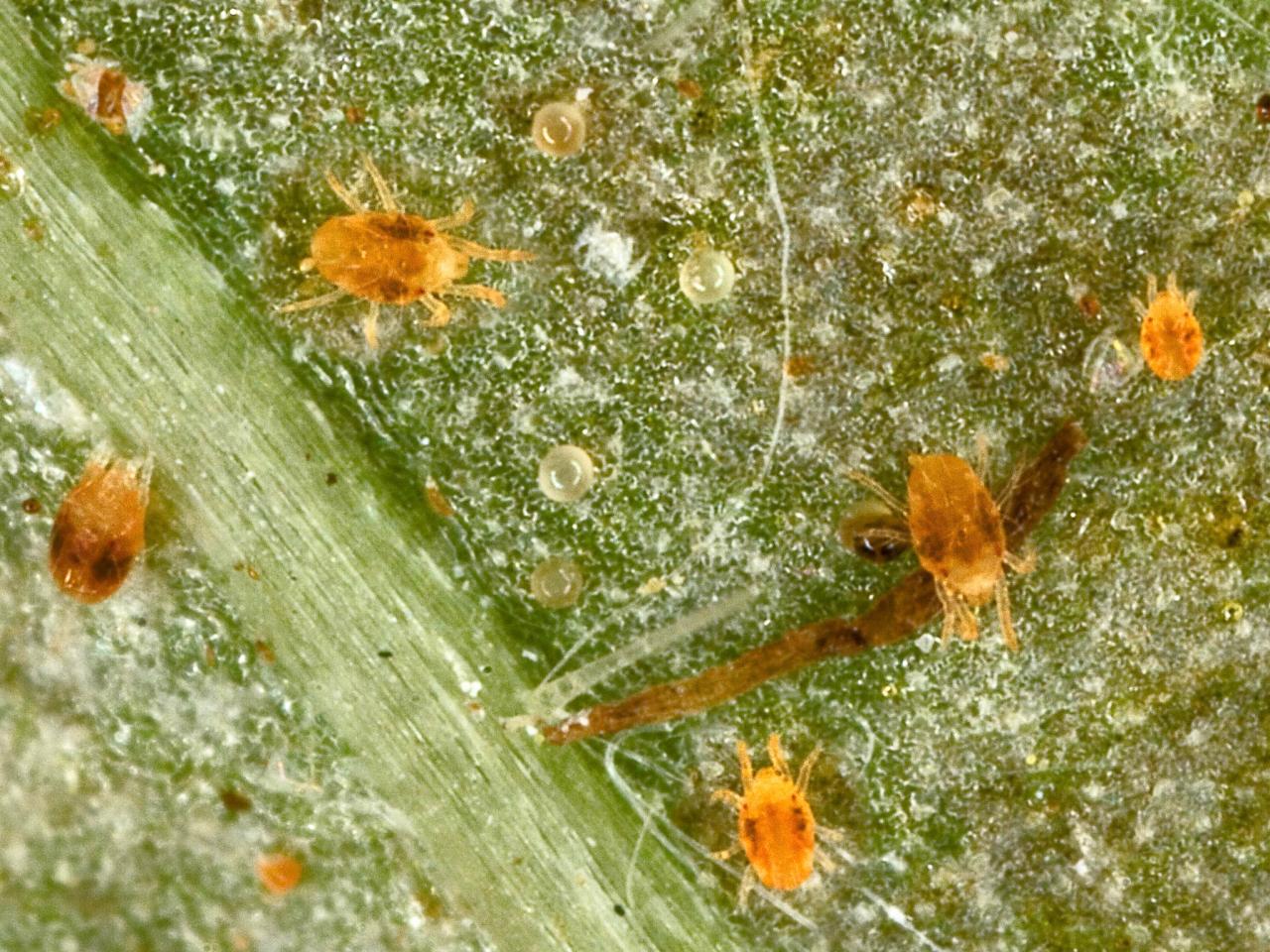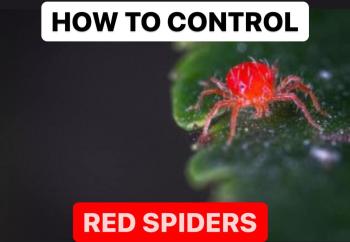Identifying the Enemy: Understanding Red Spider Mites
Red spider mites are tiny, eight-legged arachnids that can wreak havoc on indoor and outdoor plants. These minuscule pests are barely visible to the naked eye, but their impact can be devastating. To effectively get rid of red spider mites, it’s essential to understand their behavior, habits, and habitats. Red spider mites thrive in warm, dry environments, making them a common problem in greenhouses, indoor gardens, and outdoor plants during the summer months. They feed on plant sap, causing yellowing or bronzing of leaves, and can lead to premature defoliation and reduced plant growth. Early detection and treatment are critical in preventing the spread of red spider mites and minimizing damage to plants. By recognizing the signs of infestation and understanding the biology of these pests, you can take the first step towards banishing them from your garden or indoor space. Knowing how to get rid of red spider mites requires a comprehensive approach that involves identifying the problem, selecting the right control methods, and implementing preventative measures to avoid re-infestation.
How to Detect Red Spider Mite Infestations
Detecting red spider mite infestations early is crucial in preventing the spread of these pests and minimizing damage to plants. To identify an infestation, inspect plants regularly, especially during the summer months when red spider mites are most active. Look for common signs and symptoms, such as yellowing or bronzing of leaves, premature defoliation, and fine webbing on the underside of leaves or on stems. Check for tiny, moving dots on the leaves or stems, which are the actual mites. Use a hand lens or magnifying glass to get a closer look. Another way to detect red spider mites is to gently shake a leaf over a white piece of paper or a white cloth. If mites are present, they will fall onto the paper or cloth, revealing their presence. When trying to get rid of red spider mites, it’s essential to monitor plants regularly and take action quickly to prevent the infestation from spreading. By being proactive and vigilant, you can catch an infestation early and take effective measures to eliminate the problem.
Organic and Chemical Control Methods: What Works Best
When it comes to getting rid of red spider mites, there are various control methods to consider. Organic and chemical control methods are two popular options, each with their pros and cons. Organic control methods are a popular choice for those who prefer a more natural approach. These methods include using neem oil, pyrethrin, and insecticidal soap. Neem oil, derived from the seeds of the neem tree, is a natural insecticide that can be used to control red spider mite populations. Pyrethrin, a natural insecticide extracted from chrysanthemum flowers, is another effective organic control method. Insecticidal soap, a mild pesticide, can also be used to control red spider mites. These organic control methods are generally safer for the environment and human consumption, but may require repeated applications to achieve desired results. On the other hand, chemical control methods, such as miticides and acaricides, can provide quick results but may have negative environmental and health impacts. Chemical pesticides can also lead to the development of pesticide-resistant mite populations, making them less effective in the long run. When deciding how to get rid of red spider mites, it’s essential to weigh the pros and cons of each control method and choose the one that best fits your needs and preferences. A combination of organic and chemical control methods may also be used for optimal results.
Pruning and Isolation: Physical Methods for Mite Control
When trying to get rid of red spider mites, physical methods such as pruning and isolation can be effective in controlling infestations. Pruning infested areas can help remove mite eggs, nymphs, and adults, reducing the overall mite population. To prune effectively, identify the infested areas and remove any affected leaves, stems, or branches. Dispose of the pruned material in a sealed bag to prevent the mites from spreading. Isolating infested plants is also crucial in preventing the spread of red spider mites to other plants. Move infested plants to a separate area, away from healthy plants, to prevent cross-contamination. Use physical barriers, such as fine-mesh screens or fine-netted bags, to cover the infested plants and prevent mites from escaping. When pruning and isolating infested plants, it’s essential to wear protective clothing, including gloves and a mask, to prevent mite transfer. Regularly monitoring plants and taking prompt action can help prevent the spread of red spider mites and reduce the need for chemical pesticides. By combining physical methods with other control methods, such as organic and chemical control methods, you can effectively get rid of red spider mites and prevent re-infestation.
Horticultural Oil and Soap Solutions: Natural Remedies
Horticultural oil and soap solutions are effective natural remedies for controlling red spider mites. These solutions work by suffocating the mites, causing them to dehydrate and eventually die. Horticultural oil, a refined mineral oil, is a popular choice for controlling red spider mites. Mix 2-3 tablespoons of horticultural oil with 1 quart of water and spray the solution on infested plants. Repeat the application every 3-4 days to ensure complete eradication of the mite population. Soap solutions, on the other hand, are made by mixing mild dish soap with water. A solution of 1 teaspoon of mild dish soap per 1 quart of water is effective in controlling red spider mites. Spray the solution on infested plants, making sure to cover all surfaces thoroughly. When using horticultural oil and soap solutions, it’s essential to test a small area of the plant first to ensure there’s no phytotoxicity. Additionally, avoid using these solutions in direct sunlight or during hot weather to prevent plant damage. By incorporating horticultural oil and soap solutions into your mite control strategy, you can effectively get rid of red spider mites without resorting to chemical pesticides. Remember, when trying to get rid of red spider mites, a combination of control methods, including physical methods and biological control, can provide the best results.
Biological Control: Introducing Natural Predators
Biological control is a highly effective method for getting rid of red spider mites. This approach involves introducing natural predators that feed on red spider mites, reducing their population and preventing infestations. Ladybugs and lacewings are two of the most effective natural predators for controlling red spider mites. Ladybugs, in particular, are voracious predators that can consume large quantities of red spider mites. Lacewings, on the other hand, are generalist predators that feed on a wide range of pests, including red spider mites. To introduce natural predators into your garden or indoor space, purchase them from a reputable supplier and release them near infested plants. Make sure to provide a suitable environment for the predators, including adequate food, water, and shelter. It’s essential to release the predators when the red spider mite population is high, as this will ensure they have a sufficient food source. By introducing natural predators, you can create a balanced ecosystem that naturally controls red spider mite populations, reducing the need for chemical pesticides and other control methods. When trying to get rid of red spider mites, incorporating biological control into your strategy can provide long-term, sustainable results. Remember, how do I get rid of red spider mites is a common question, and biological control is a valuable solution.
Preventing Re-Infestation: Long-Term Mite Management
Preventing re-infestation is crucial when trying to get rid of red spider mites. To achieve long-term mite management, it’s essential to maintain good garden hygiene, monitor plants regularly, and use physical barriers. Start by ensuring good air circulation around plants, as red spider mites thrive in humid environments. Remove any weeds or debris that may be harboring mites, and dispose of infested plants to prevent the spread of the infestation. Regularly inspect plants for signs of mite infestation, such as yellowing leaves or fine webbing. Use physical barriers, like fine mesh or fine-netted row covers, to prevent mites from migrating to healthy plants. Additionally, maintain a healthy plant environment by providing adequate water, nutrients, and pruning. Healthy plants are more resilient to mite infestations and can recover quickly from damage. By implementing these strategies, you can prevent re-infestation and ensure that your plants remain mite-free. Remember, how do I get rid of red spider mites is a common question, and preventing re-infestation is a critical step in the process. By following these tips, you can enjoy a mite-free garden or indoor space for years to come.
Common Mistakes to Avoid When Dealing with Red Spider Mites
When trying to get rid of red spider mites, it’s essential to avoid common mistakes that can hinder the effectiveness of control methods. One of the most significant mistakes is over-reliance on chemical pesticides. While these products may provide quick results, they can also harm beneficial insects, contaminate soil and water, and even contribute to the development of pesticide-resistant mite populations. Another common mistake is neglecting to monitor plants regularly. Red spider mites can quickly colonize and spread to other plants if left unchecked, making it crucial to inspect plants frequently for signs of infestation. Additionally, failing to isolate infested plants can lead to the spread of mites to healthy plants. It’s also important to avoid using high-pressure water sprays, which can further spread mite infestations. By avoiding these common mistakes, you can increase the chances of successfully getting rid of red spider mites and preventing re-infestation. Remember, how do I get rid of red spider mites is a common question, and avoiding these mistakes is a critical step in the process. By being aware of these potential pitfalls, you can develop a comprehensive strategy for managing red spider mite infestations and maintaining a healthy, mite-free garden or indoor space.






